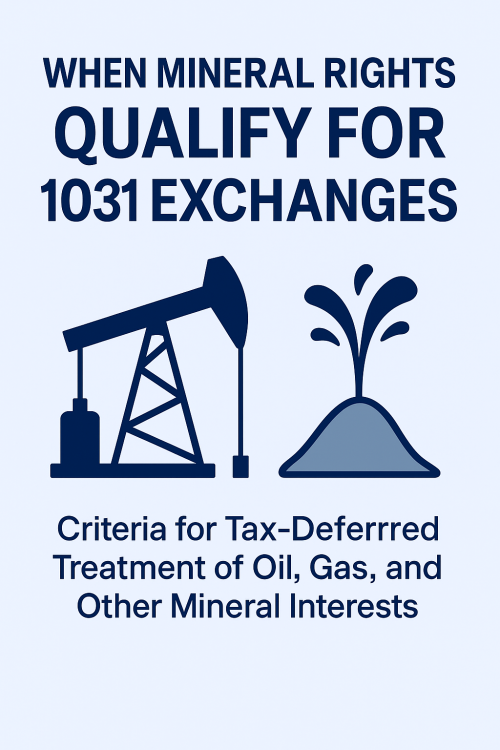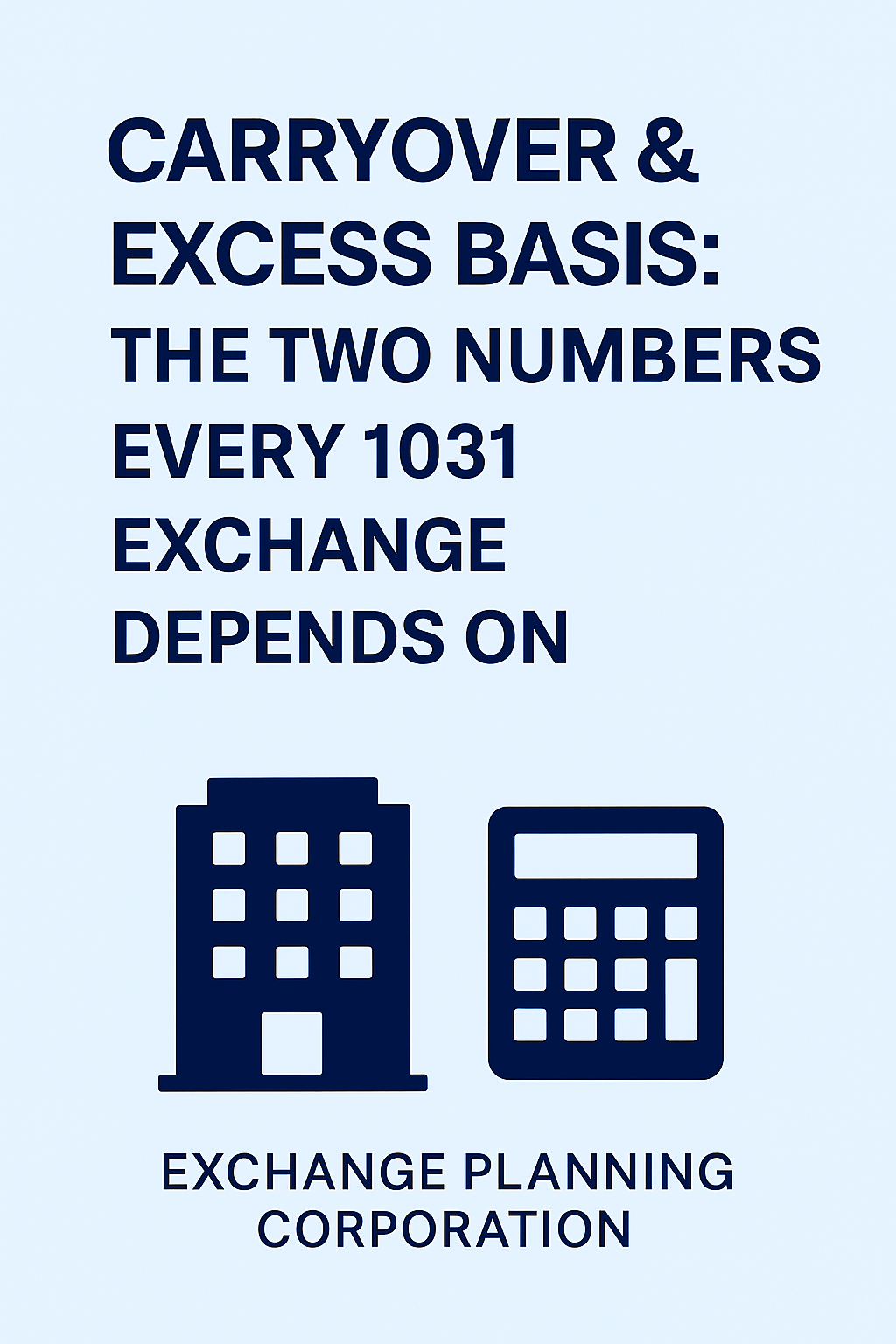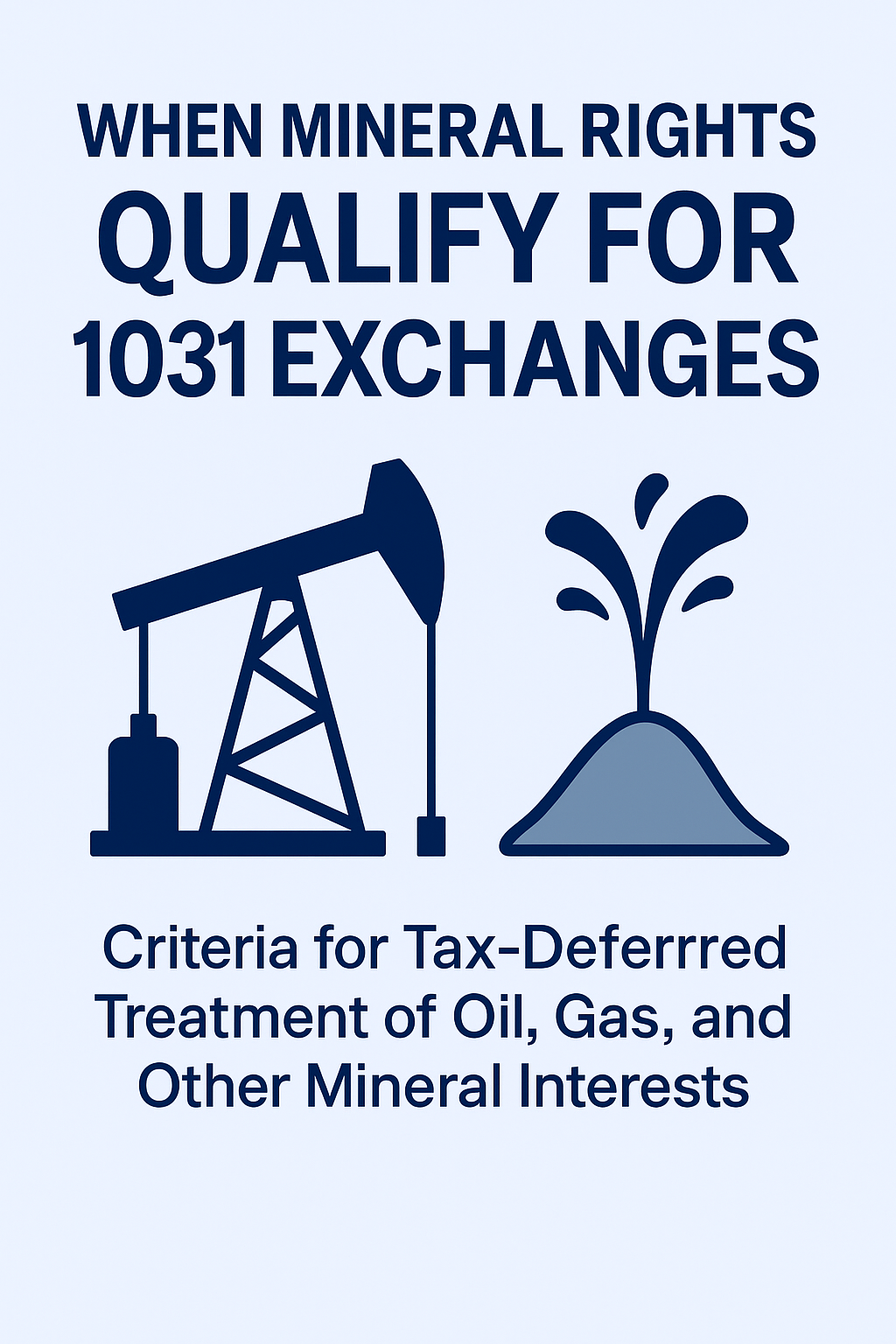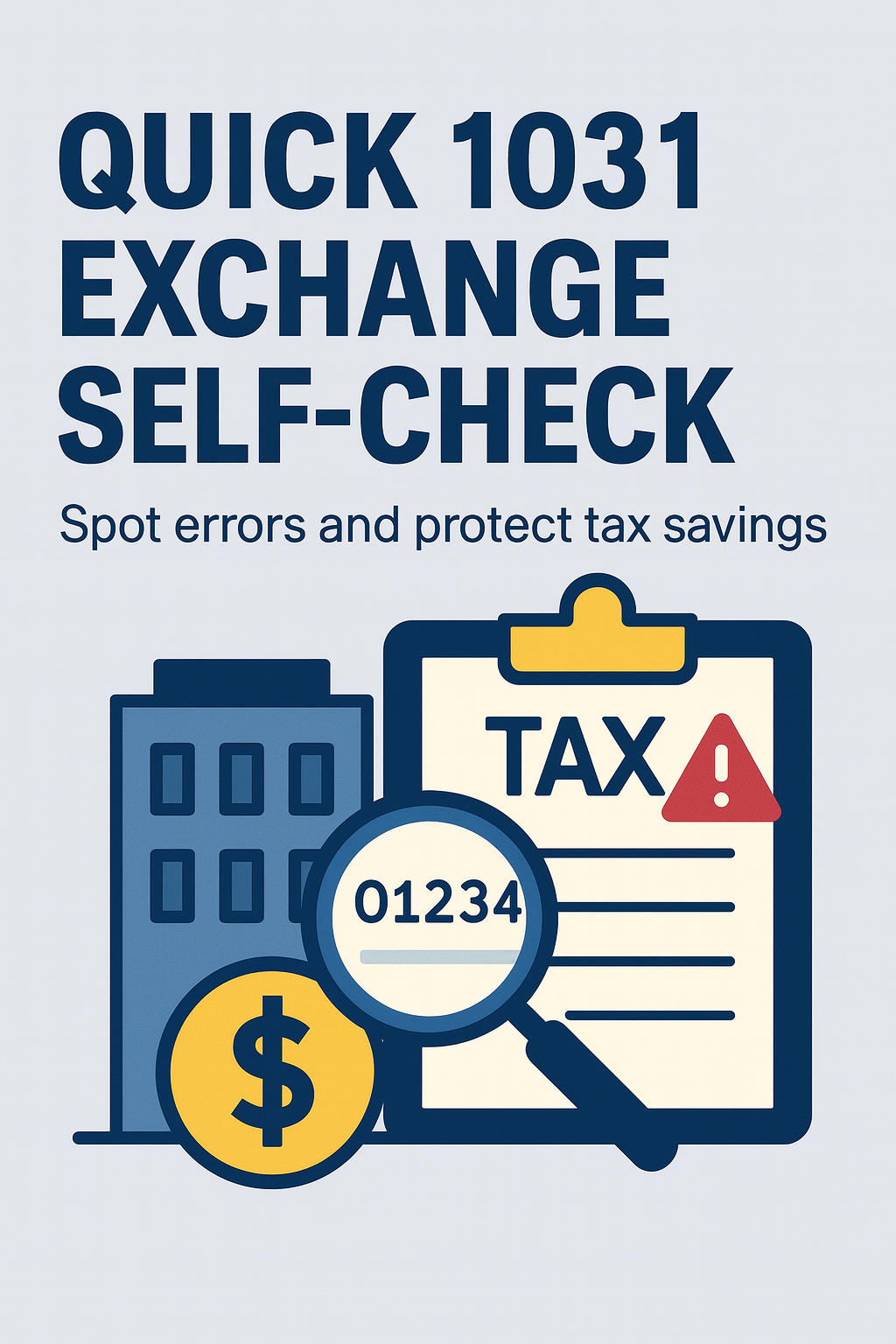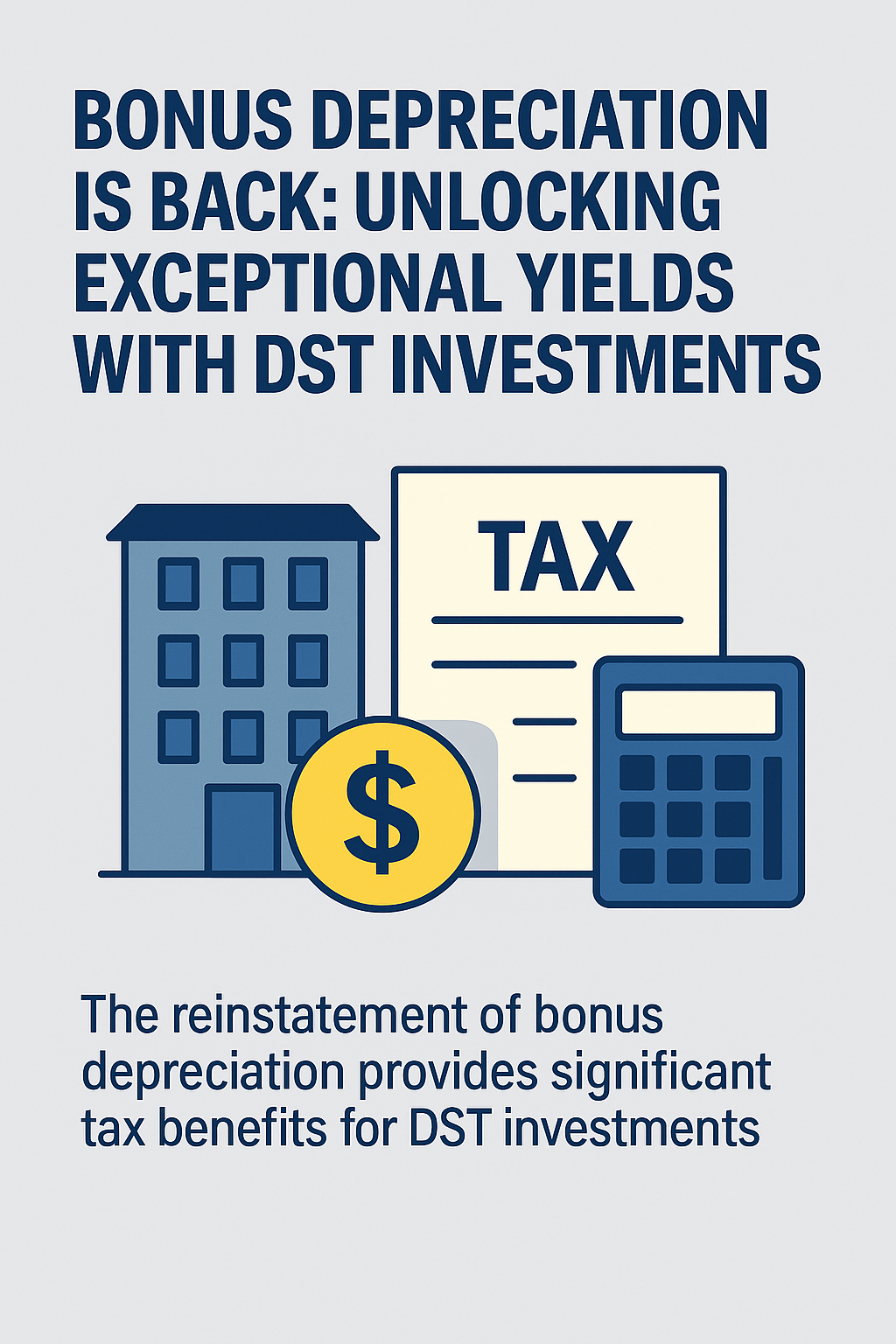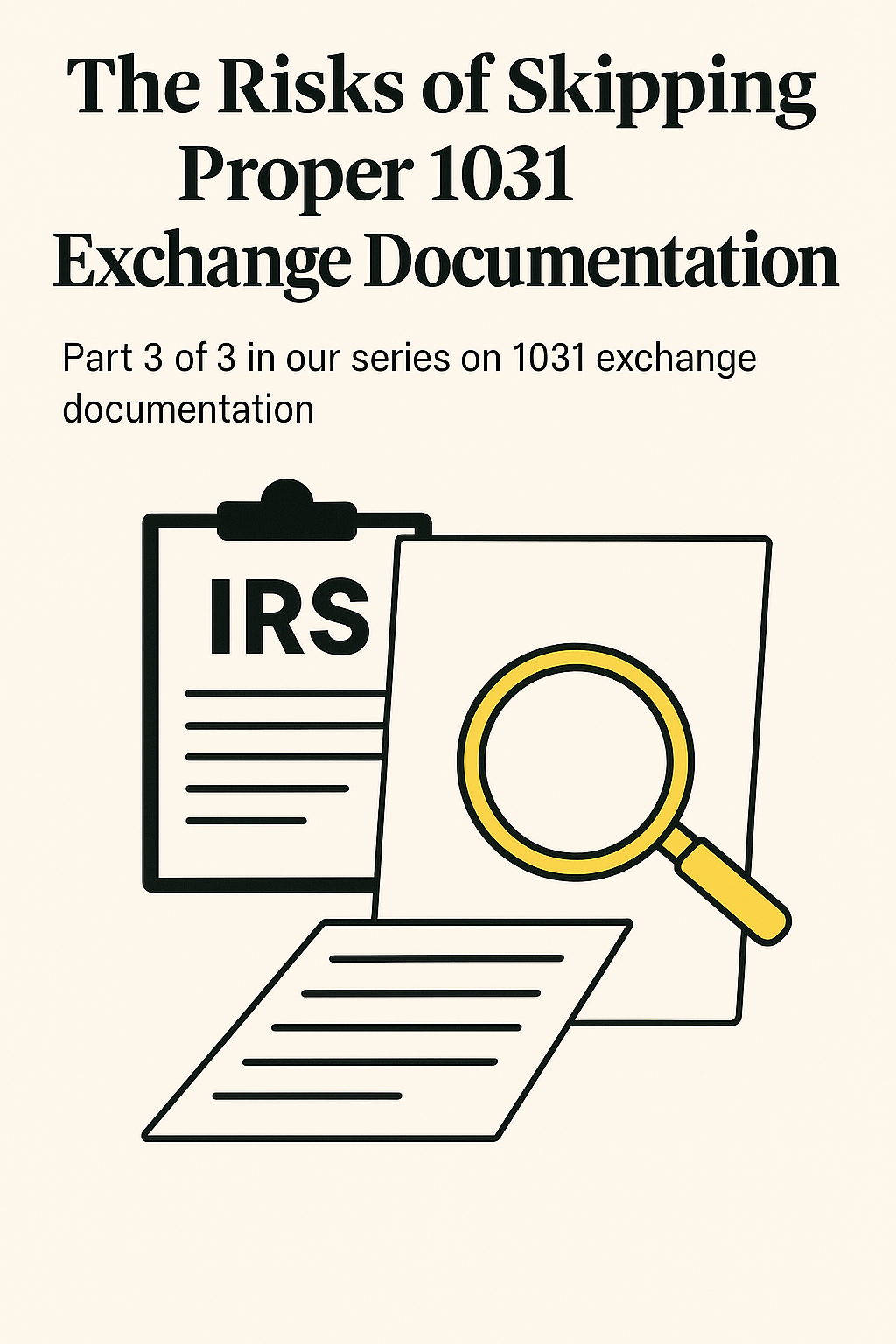Section 1031 Basics and Why “Real Property” Status Matters
Section 1031 of the Internal Revenue Code allows investors to defer capital gains tax when they exchange one business or investment property for another of “like kind.” After 2017’s tax law changes, this tax-deferral benefit applies only to real property exchanges – personal property no longer qualifies. This makes it crucial to determine whether mineral rights are considered real property. Generally, real property includes land, improvements, and interests in land (including unsevered natural resources). Intangible rights that derive their value from real estate – for example, a lease or easement – can also count as real property in a like-kind exchange. By contrast, personal property or rights not considered an interest in land cannot be exchanged tax-free for real estate.
Practical point: In a 1031 exchange, you can swap mineral rights for other real estate (or vice versa) only if those mineral rights are classified as a real property interest. If they are treated as personal property, the exchange won’t qualify for §1031 deferral. Starting in 2018, you can no longer 1031 exchange equipment, machinery, franchise rights, or other personal property – it must be real property on both sides of the swap.
Mineral Rights as Real Property: IRS Rulings and Official Guidance
The good news for investors is that the IRS has consistently viewed many oil, gas, and mineral interests as real property for federal tax purposes. This means that if you hold qualifying mineral rights for investment, you can generally exchange them for other real estate under §1031.
Oil and gas leaseholds are a prime example. A lessee’s interest in oil and gas in the ground is considered an interest in real property. In Rev. Rul. 68-226, the IRS ruled that the operating interest under an oil & gas lease (the right to drill and extract oil/gas) is treated as real property for tax purposes, even if state law might call it an “interest in minerals” or a lease. From the IRS perspective, an oil/gas leasehold is like owning real estate (the mineral estate) rather than a mere contract right.
Mineral royalty interests are also treated as real property. Rev. Rul. 73-428 confirmed that a perpetual royalty interest in oil and gas in place – for example, owning a percentage of production in perpetuity – is essentially a fee interest in the mineral estate and thus real property. Owning a royalty interest means you have a right to a share of the production from the land, and the IRS treats that right as an interest in the land itself, not as personal property. Likewise, Rev. Rul. 72-117 held that an overriding royalty (a royalty carved out of a lease, typically lasting as long as the lease/production lasts) is an interest in real property.
On disposition, the IRS treats selling or exchanging oil, gas, or mineral interests in place as the sale of real property. Rev. Rul. 88-78 noted that the disposition of oil rights is considered the disposition of an interest in real property for tax purposes. All of these rulings reinforce that minerals in the ground and rights to those minerals are part of the realty. One caveat: once minerals are extracted and thereby severed from the land, they become personal property. For instance, barrels of oil or tons of coal that have been removed from the ground are no longer real estate – you can’t 1031 exchange a stockpile of oil like you could an oil reserve in the ground.
Historically, even if state law had nuances in classifying mineral interests, IRS rulings applied a uniform federal tax view. Notably, Rev. Rul. 68-226 explicitly said its conclusion (oil and gas lease = real property) applies regardless of how state law treats the interest. More recently, however, regulations issued after the 2017 changes indicate that state or local law definitions do matter in borderline cases. The final IRS regulations for §1031 exchanges define “real property” to include “property that is classified as real property under State or local law” (with certain exclusions). In practice, most states do consider mineral interests – especially those of an indefinite duration – to be real property. For example, owning mineral rights in Texas is owning a real property interest in the land’s subsurface. But there are variations; some states might treat certain limited mineral rights or short-term leases differently. Always check the state’s legal classification, because under the newer regulations if your state deems a particular mineral interest as personal property, it may not qualify for 1031 treatment. Generally, though, the kinds of mineral estates and leases addressed in the IRS rulings (perpetual or indefinite interests in minerals) will be real property in most jurisdictions.
When Mineral Rights Qualify as Like-Kind Property
Once you establish that a mineral right is real property, the like-kind test is broad. Virtually any real property used for business or investment can be exchanged for any other real property of equal or greater value, regardless of grade or quality. Improved land can be swapped for unimproved land; a commercial building can be swapped for a rental house or farmland. The same applies to mineral interests held for investment or business use.
Fee mineral interests qualify because you own the mineral rights outright, in perpetuity, beneath a parcel of land. An owner of oil-rich mineral acreage can exchange that mineral estate for other real estate. In tax terms, selling mineral rights and purchasing real estate with the proceeds can qualify as a 1031 swap if you use a qualified intermediary and meet the identification and closing timelines.
Oil and gas working interests (leasehold interests) can also be like-kind to other real property. A working interest under an oil and gas lease is the right to explore, drill, and produce oil or gas from a property, typically bearing costs and receiving a share of production. Because it is an interest in the oil/gas in place – an unsevered natural resource – the IRS treats it as real property. An investor can sell a working interest and acquire a commercial building or another real estate interest while deferring capital gains. If you dispose of a working interest, keep in mind that you may have taken depletion or drilling cost deductions; see the discussion of potential recapture below.
Royalty and overriding royalty interests generally qualify because they represent a share of production that lasts as long as the lease or the reserves produce. If you own a 5% royalty on all oil produced from a property and that interest lasts as long as the well produces, it is an interest in real property and can be exchanged for other real estate. An overriding royalty interest carved out of someone else’s working interest that continues for the life of the lease is treated similarly. For example, a retired petroleum engineer with a 2% overriding royalty can use a 1031 exchange to acquire a Delaware statutory trust (DST) interest in an apartment portfolio that is structured as real estate, deferring gain.
Perpetual natural-resource rights such as perpetual water rights, timber rights, or other rights that are considered real property also qualify. The IRS has analogized these to mineral rights for decades, treating perpetual rights as like-kind to land, while a right to draw a specific amount of water for a limited period was not like-kind to a fee interest. For oil and gas, a royalty or working interest that lasts for the life of the reserve is analogous to a perpetual right because it endures until the resource is exhausted; courts have emphasized that the duration of the interest is a key factor in like-kind analysis.
You are not required to exchange mineral rights for other mineral rights. A mineral interest can be the relinquished property or the replacement property in a 1031 deal against any other qualifying real estate. As long as both sides are real property held for investment or business, the like-kind standard is met. An oil & gas royalty can be swapped for a rental condo; a working interest can be swapped for vacant land; even a cell-tower easement (another type of real property interest) could be swapped for a mineral interest. The tax code draws no distinction requiring you to stay within the same industry or asset type, though staying within the same category (oil/gas into oil/gas) can sometimes be wise from a separate tax-planning standpoint.
When Mineral Rights Do Not Qualify (or Need Caution)
Not every contract or asset involving minerals gets favorable treatment. There are important exceptions where a “mineral” interest is not considered real property or is not like-kind to a fee interest.
Production payments or “oil payments” are classic non-qualifying assets. These are rights to receive a specific amount of mineral production or revenue – for example, the first $1 million of production revenue or the first certain number of barrels – and they terminate once the specified amount is received. Courts have denied 1031 treatment on exchanges where a fee interest was swapped for such a limited payment right, because the right is essentially a stream of income, not a continuing real property interest.
Rights to minerals for a fixed term also raise issues. If you have mineral rights for a defined, short-term period – a five-year extraction permit or a lease that expires in a few years regardless of production – swapping that for a fee simple property is risky. A long-standing safe harbor has been that a leasehold should have 30 years or more remaining (including options) to be safely considered like-kind to a fee interest. Leaseholds significantly shorter than 30 years have been viewed as not equivalent to real property in exchanges, and at least one Tax Court case held a 20-year lease not like-kind to a fee interest. Most oil and gas leases are structured to last indefinitely (“so long as there is production” after an initial term), which generally counts as an indefinite duration. But if you were to exchange, say, a mining lease that only runs five or ten years for a piece of land, the IRS could argue it fails the like-kind test due to the lease’s short remaining life. To qualify, a mineral lease or servitude should be perpetual or long-term enough to approximate ownership. Although 2020 regulations classify all leaseholds as real property interests, the historical 30-year benchmark is still a useful guideline; under 30 years may invite scrutiny that it’s a diminishing asset, not true real estate.
Minerals already extracted are another clear no. Once minerals are produced and removed from the land, they become personal property (inventory or goods). If you sell a quantity of extracted oil, gas, or precious metals, that is a sale of personal property and cannot be directly 1031 exchanged for real estate. You cannot treat the sale of 1,000 barrels of stored oil as a like-kind exchange into a new property; the oil is not real property after extraction. The key is that the mineral interest in the ground qualifies, but the severed minerals do not.
Interests in entities – partnership interests, corporate stock, or interests in business entities – do not qualify for §1031, even if those entities own real estate. If your mineral rights are held via a partnership or LLC (other than a single-member disregarded LLC), you can’t 1031 exchange the partnership interest; you would need title to the actual mineral rights. Shares in a publicly traded mineral royalty trust or fund are also personal property. To execute a 1031 with mineral assets, you generally must directly own a real property interest or use a tenant-in-common (TIC) or DST structure that confers direct real-estate ownership.
Be cautious about carving out royalties during a sale. If you sell your mineral property but keep a royalty interest, that retained piece might lose its real property status because you effectively split the asset and took some proceeds. The IRS could view it as a partial cash sale rather than a full like-kind exchange. To avoid this, any royalty or mineral interest you want to exchange should ideally be exchanged in whole rather than carved out mid-transaction without careful structuring.
Finally, foreign real property is not like-kind to domestic real property for §1031 purposes. An owner of non-U.S. mineral interests (e.g., a Canadian oil sands lease) cannot exchange into U.S. real estate and expect deferral. Both relinquished and replacement properties must be within the United States to qualify.
Frequently Asked Questions
Do mineral rights have to be exchanged for other mineral rights, or can I exchange into standard real estate?
You do not have to exchange mineral rights for mineral rights. Any real property held for investment can be exchanged for any other like-kind real property. For example, you can swap mineral rights for a commercial building, or vice versa, and still qualify for §1031 deferral. The key is that both the relinquished and replacement properties are real property interests used for business or investment. Many mineral owners exchange into more traditional real estate, and many real estate investors exchange into oil and gas royalties. Just remember the potential §1254 recapture issue: if you’re leaving the oil/gas sector, you may have to recognize ordinary income on prior depletion or drilling deductions, even though the capital gain is deferred.
My oil & gas lease is about to expire – can I still do a 1031 exchange with it?
It’s tricky. If your lease is about to expire (say it has only a year or two left and no production has been established), it may be considered a short-term interest rather than a long-lived real property interest. A leasehold with 30 or more years remaining (including options) is generally viewed as like-kind to a fee interest; something with just a year or two remaining is likely not like-kind to a new property acquisition. A nearly expired lease can be treated more like a contract right with fleeting value. If you anticipate doing a 1031, it’s better if the lease has been extended or converted into a longer-term interest, for example through production, which can hold the lease indefinitely. Each case is fact-specific, so consult a tax advisor, but be prepared that a very short remaining lease probably won’t qualify.
Are royalty interests considered real property for 1031 purposes?
Yes, in most cases. Mineral royalty interests are treated as real property interests as long as they are tied to minerals in place and last for the life of the mineral reserve or lease. The IRS has explicitly ruled that an oil and gas royalty is a fee interest in real property. If you own a royalty interest – for example, a 5% royalty on production from a well that lasts as long as the well produces – you can sell that interest and defer tax by acquiring other real estate via a 1031 exchange. Watch for limited royalties: if the royalty lasts only for a set term or a fixed amount of production, it begins to look like a finite right and may not be like-kind. Also ensure you hold the royalty directly (not through an entity interest that would be treated as personal property). Royalty trusts or fund shares can’t be exchanged directly; you need direct ownership of the royalty interest in land.
What about overriding royalties or non-operating interests – do they qualify for 1031?
Overriding royalty interests (ORRI), net profits interests, and similar non-operating interests in oil and gas generally qualify as real property for 1031 purposes, because they represent a share of the minerals in place. An ORRI is carved out of a working interest and usually lasts as long as the lease produces. Courts have treated an ORRI that continues for the life of the reserves as like-kind to other real estate. As with royalties, the key is that the interest isn’t just a short-term or limited-quantity right. If an ORRI continued only until the first certain number of barrels, that would be a production-payment scenario (which is not like-kind). Review the creating instrument to confirm it isn’t limited in an unusual way.
Can I 1031 exchange mineral rights in one state for real estate in another state?
Yes. 1031 exchanges can be across state lines. There is no requirement that the relinquished and replacement properties be in the same state. You can exchange Texas mineral rights for Florida beachfront property, or Colorado mineral rights for a Nevada apartment building, as long as both are U.S. real property. Be mindful of state law differences in how mineral rights are defined. If you had something more exotic – say a mineral lease in a state that classifies that lease as personal property – you could have a problem exchanging it for real estate in another state. Confirm that what you have is considered real property in its state. If both sides are unquestionably real property (which is usually the case), interstate exchanges are fine. Note that each state may have its own transfer tax or rules on conveying mineral interests, but those don’t affect federal 1031 treatment.
If I sell my mineral rights and buy into a syndicate or fund that owns real estate, can that work as a 1031?
It depends on the structure. You cannot exchange into a partnership interest or shares of a fund, because those are personal property (securities). But there are structures that allow fractional ownership of real estate that are 1031-eligible. Two common ones are Tenant-in-Common (TIC) agreements and Delaware Statutory Trust (DST) investments. These allow you to own an undivided interest in real property – for example, a 2% TIC interest in an office building, or a DST that holds an apartment complex – and those are considered direct real estate ownership for tax purposes. Many mineral owners who want a passive investment will 1031 into a DST that holds commercial properties or net-leased buildings, thereby deferring gain and diversifying their portfolio. The key is that the structure must confer a real property interest; if the “syndicate” is just an LLC whose units you buy, that won’t qualify. Always get advice on whether a given investment vehicle is 1031-compatible.

